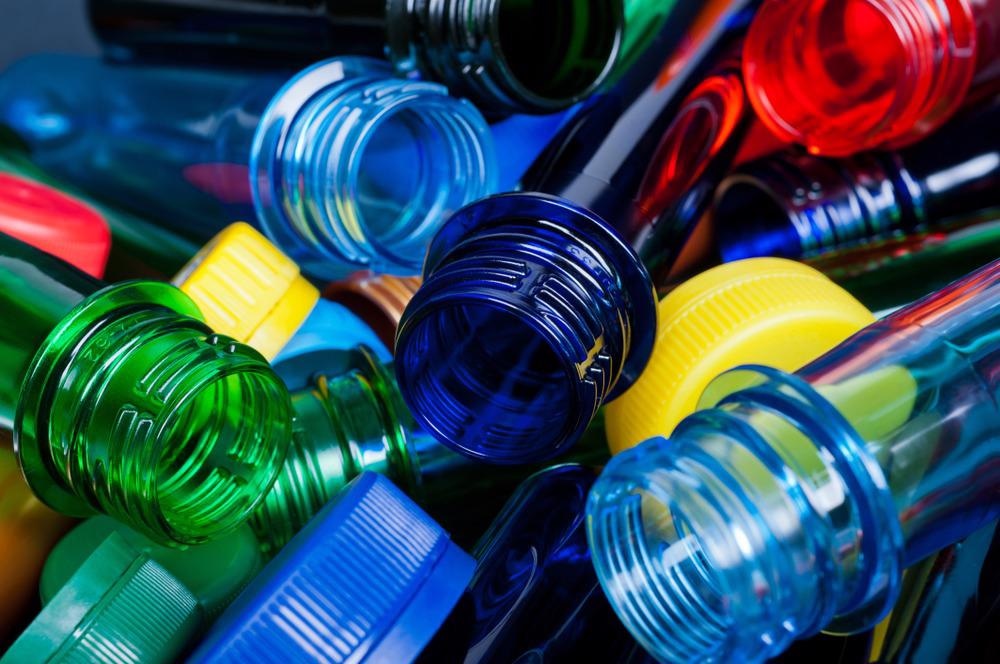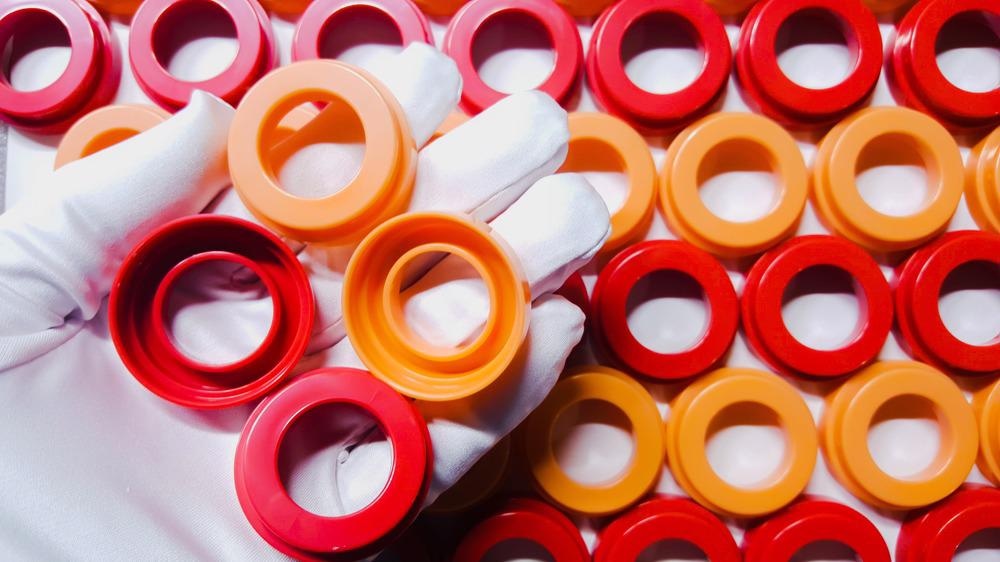Plastic is a term that refers to a set of materials that can be made from either natural or manufactured resources and can be used to make a variety of products. We look at the raw materials that are used to produce plastics.

Image Credit: DidiPho/Shutterstock.com
Plastics are a type of material that can be shaped while they are soft and then solidified to keep their form.
The main elements used to make plastics today are cellulose, coal, natural gas, salt, and crude oil, which are all found in nature. Various raw materials are used in the production of plastics, which are refined into ethane and propane. Heat is then applied to ethane and propane, resulting in a process known as "cracking," which transforms them into ethylene and propylene, respectively.
Plastics are polymers, which means that they are created by joining together chains of molecules (known as monomers) to form a larger molecule than originally existed (a polymer). Polystyrene is an example of such a material. Polymers are robust and long-lasting because of their connections.
Plastics From Cellulose
Cellulose plastics are bioplastics that are produced by processing cellulose or cellulose derivatives into plastic. Cellulose plastics are made from softwood trees, which are used as the primary raw material in their production.
The bark of the tree is extracted and can be used as a source of energy in the manufacturing process. The tree is processed or heated in a digester in order to separate the cellulose fiber from the rest of the tree's fiber.
A byproduct of the digester's operation is resins and lignins. The byproducts can be utilized as a fuel or as a feedstock in the manufacture of other chemical products, depending on their composition. It is softwood that is the most commonly used raw material in the production of cellulose plastics, and the growing number of anti-deforestation rules is a significant impediment to the market's growth. The easy availability and low cost of conventional plastics are also significant factors limiting the growth of the cellulose plastics business.
Plastics Made of Natural Gas
The majority of people are unaware that natural gas is the starting point for a large portion of plastic manufacture. The cracker plant is the first stage in the process of making plastic from natural gas for use in manufacturing. Naptha (a crude oil-based product) and ethane (a natural gas liquid) are converted into ethylene in cracking operations. Ethylene is used as the starting point for a range of chemical products and plastics.
A pipeline is then used to transfer the ethylene generated during the cracking process to another facility where it will be transformed into useable goods, the most often seen being polyethylene. Polyethylene, sometimes known as polythene, is the most widely used plastic today. It is a polymer that is mostly utilized in the packaging industry.
Crude Oil as a Raw Material
Petroleum-based plastic is made up of artificial organic polymers that are derived from natural gas or oil and are used in virtually every facet of modern society, including the home, the workplace, and cars. Worldwide output of petroleum-based plastics exceeded 322 million tons in 2015, an increase from the previous year's production of 1.7 million tons.
Population growth in coastal areas has increased progressively during the twentieth century. The use of petroleum-based plastic materials for various applications, particularly medical, industrial, commercial, and municipal, has steadily increased.

Image Credit: yohaken surasak/Shutterstock.com
These materials have been released into the environment unintentionally or intentionally, contributing to a significant environmental problem. Despite the fact that petroleum-based plastics can be fractured, they are unable to spontaneously degrade due to their extreme stability.
New Materials Found - PBTL
Making new batches of PBTL from the leftover monomers from the procedure demonstrated that the new plastic could be formed, broken down, and recreated over again. According to the researchers, the process might be repeated forever if necessary.
Researchers also claim that their new material might be used to manufacture a wide range of products that are currently manufactured with conventional plastics, so significantly lowering the quantity of plastic that ends up in the environment. It should be noted that such polymers would need to be separated from other materials before they could be recycled, which is the single limitation in the scenario.
It is possible to create the substance, known as PBTL, by putting together chemical building blocks known as bicyclic thiolactones. Because PBTL possesses exceptional strength, toughness, and stability, it has the potential to be applied in a variety of applications such as plastic wrapping, sports equipment, automobile components, building materials, and other items.
After heating PBTL at 100 degrees Celsius in a chemical catalyst for 1 day, the researchers discovered that it can be readily recycled. This neatly disassembles the plastic into its basic building components, which may then be rejoined to form new high-quality PBTL materials.
References and Further Reading
Royer, J., et al. 2018. Production of methane and ethylene from plastic in the environment. PLoS ONE 13(8): e0200574. https://journals.plos.org/plosone/article?id=10.1371/journal.pone.0200574
Gu, F., et al. 2020. Dynamic linkages between international oil price, plastic stock index and recycle plastic markets in China. International Review of Economics & Finance. Volume 68, Pages 167-179. https://www.sciencedirect.com/science/article/pii/S1059056020300678?via%3Dihub
Howgego, J. 2022. Waste want not… not? New Scientist. Volume 253, Issue 3373, Pages 38-47. https://www.sciencedirect.com/science/article/pii/S0262407922002482?via%3Dihub
Disclaimer: The views expressed here are those of the author expressed in their private capacity and do not necessarily represent the views of AZoM.com Limited T/A AZoNetwork the owner and operator of this website. This disclaimer forms part of the Terms and conditions of use of this website.